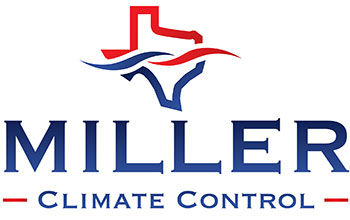
Your entire home should be a sanctuary that’s warm and cozy in the winter and cool and comfortable in the summer. However, residents in some two-story homes find the upper floor is stubbornly hotter or colder than the main floor.
This could merely be caused by the fact that most thermostats in a house are on the main floor, which is where people spend the the majority of time—in the living room, kitchen, etc.—so as a result they tend to set the temperature according to how it feels on the first floor.
However, temperature variations between the upstairs and downstairs could also be due to problems with your HVAC system. Some of these difficulties can be solved somewhat quickly while others might necessitate more extensive and costly fixes. Here, the team at Miller Climate Control LLC will help you solve why the upstairs of your home is hotter than downstairs, or vice versa.
Why Is It Hotter Upstairs?
The phenomenon of the upstairs of a two-story home getting hotter than the downstairs can be traced to several factors. Number one, heat rises, so it’s normal for the second floor of a home to get hotter than the main floor. Not enough insulation in the attic or roof can exacerbate this issue by letting heat transfer from the roof into the upstairs rooms.
Another common reason is that the air conditioning is not powerful enough to cool the entire home, causing it to have difficulty cooling the upstairs properly.
To address these issues, homeowners could put in additional insulation in the attic and make sure their home has adequate ventilation. If there’s a question of whether the air conditioner is the ideal size for the home, call an experienced HVAC company like Miller Climate Control LLC inspect the unit. A skilled professional also can help select a unit that's better suited for your home if you want air conditioning installation or replacement.
Why Is My Upstairs Always Cold/Not Heating?
When the downstairs of your home is warm, but it’s extremely chilly upstairs, that makes for a very chilly night for anyone whose bedrooms are on the upper floor. The most prevalent causes of an upstairs not heating like it ought to are the insulation levels and the ductwork.
Inadequate insulation enables cold air to leak through the home’s attic or walls and contribute to heat loss, causing colder temperatures on the upper levels. It’s crucial to make sure your home has a solid, level layer of insulation in the attic and proper insulation in the walls to keep the cold out and the heat inside.
The ductwork in a home plays a fundamental role in circulating conditioned air throughout different rooms of the building. However, issues with the ductwork can result in the upstairs being colder than the downstairs. A typical reason for this is improper airflow balance. The ducts may not be the right size or configuration, causing an uneven distribution of air between the floors. This can cause more warm air to go downstairs, causing insufficient airflow—which is the heated air—on the upper level.
Another factor with ductwork is the placement of the supply and return vents. If there are fewer vents on the upper story or they aren't well installed, it can restrict air circulation and cause inferior heating or cooling. Additionally, leaks or gaps in the ductwork can cause air loss, lowering the overall efficiency of the HVAC system and exacerbating the temperature difference.
To determine why the upstairs is colder than the downstairs, homeowners should hve their ductwork examined by trusted HVAC pros like the team at Miller Climate Control LLC to identify any imbalances, leaks or inadequacies. Sealing leaks and putting in additional vents or adjusting existing ones can help increase airflow and ensure a more even temperature balance between the upstairs and downstairs.
What Do I Do to Fix a Hot/Cold Upstairs?
If your upstairs is hotter or colder than the lower floors of your house, an HVAC zoning system could be a useful solution.
An HVAC zoning system divides the household into distinctive zones, which each have their own thermostat and damper system so the homeowner can modify the heating or cooling of each zone.
This system can be especially useful in situations where the upstairs of a multi-story home is too hot or really cold while the main floor is comfortable. By setting up a zoning system, homeowners can control the temperature independently in each zone, allowing them to address specific hot or cold spots easily.
To learn more about an HVAC zoning system in Georgetown, call Miller Climate Control LLC. We’ve created and installed customized home comfort plans for many community members and are happy to show how an HVAC zoning system could work in your home.
Why Is My Upstairs So Humid?
In addition to the upper story being hotter or colder than the rest of the house, another problem in multi-floor homes is when the higher levels are more humid than downstairs.
A common cause for excess upper floor humidity is weak ventilation on the upper floor, which can result in greater humidity levels. As is often the case with temperature differences between floors, poor insulation or sealing in the attic or walls may let warm, humid air from outside the house infiltrate the upstairs rooms. And, if there are any leaks or plumbing issues on the upper floor, that can also cause extra moisture in that section of a home.
To correct humidity problems, homeowners can improve ventilation by installing fans or opening windows to promote airflow. Appropriate levels of insulation in the attic and better sealing the attic and walls can help stop external moisture from entering the upstairs. Finding and repairing any leaks or plumbing issues is also imperative.
Depending on the levels of moisture found in the home, a whole-home dehumidifier could be another valuable tool to reduce humidity in your home.

